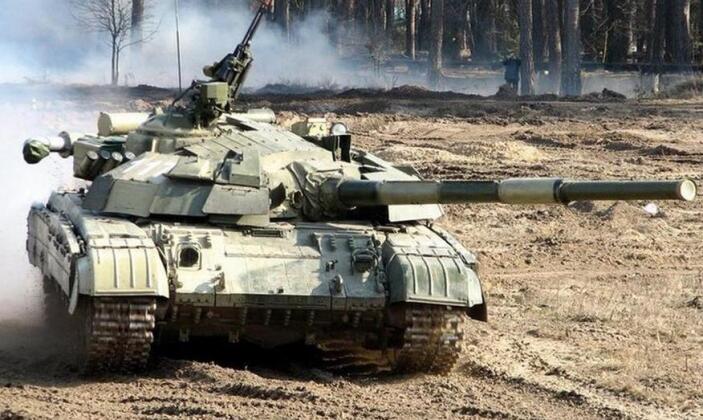The first 10 days of Russia’s military intervention in Ukraine have been notable for the lack of resistance from Ukrainian armour, with Ukraine fielding by far the largest tank force in Europe which under different circumstances would be expected to shoulder a large portion of the burden for fighting particularly considering the limited operations of Russian air units. A number of factors, however, have prevented Ukraine’s tank divisions from playing a significant role in the country’s war effort despite their sheer size. Ukraine currently deploys an estimated 850 tanks, close to 90 percent of which are variants of the T-64B of which an estimated 720-750 are in service, with the remainder being variants of the T-72A. Both date back to the mid-1970s, and have been prioritised over much more capable T-80U tanks which the country inherited when the Soviet Union collapsed but largely sold off or placed in storage due to high operational costs. Although the country developed the relatively modern T-84 tank, which is based on the T-80UD, its high cost also prevented its deployment with the vehicle produced solely for export in small numbers. Issues with Ukrainian armour are not relegated solely to the age of its tanks, however, which suffer from extremely poor base armour and obsolete explosive reactive armour if any, as well as a lack of thermal sights or mobility. Another major but often overlooked issue separate from the tanks themselves is country’s lack of modern anti tank munitions.

Since the collapse fo the Soviet Union Ukraine failed to develop a modern armour-piercing fin-stabilized discarding sabot (APFSDS) projectile. Thus the most capable anti armour round in Ukrainian service, and one used by a minority of units, is the Soviet BM42 Mango which has 450mm penetration at 2000m ranges against homogenous armour. This is insufficient to penetrate even the base armour of frontline Russian tanks, let alone when deploying Kontakt-5 or Relikt explosive reactive armour, with Russia’s most widely used and least well armoured frontline tank the T-72B3 having a base frontal armour of 550mm. The T-90M, meanwhile, has frontal armour of 900-950mm when including the protection provided by its Relikt explosive reactive armour. Most Ukrainian tanks use even weaker and older rounds, while even newer tanks such as the T-84 produced for export notably have no rounds better than the BM42 which represent their primary weakness against 21st century armour. The fact the T-64s and T-72s in the Ukrainian Army pair much weaker armour, mobility and sensors with projectiles that cannot seriously threaten Russian armour makes their disadvantage overwhelming. This more than compensates for their vast numerical advantage in the theatre, with Russia unlikely to ever deploy anything near 850 tanks to Ukrainian territory.
Russian tanks by contrast deploy APFSDS projectiles very well suited to penetrating Ukrainian armour, and designed with engagements against the most advanced NATO tanks in mind. The T-72B3 can deploy Svenez-1 rounds with 740mm penetration at 2000m ranges, which is comfortably sufficient to penetrate anything in the Ukrainian inventory. The Russian T-14’s Vaccum-1 rounds have unrivalled 1000mm penetration at well over 2000m ranges. As a result, while Ukraine’s armoured units may look large on paper, its capabilities remain extremely limited. Should Ukraine seek to invest in improving its tank units’ capabilities, beyond programs to integrate thermal sights and more modern explosive reactive armour, efforts to produce a new generation of APFSDS projectiles remain vital to allow them to pose any kind of challenge to the armour fielded by any neighbouring countries.
